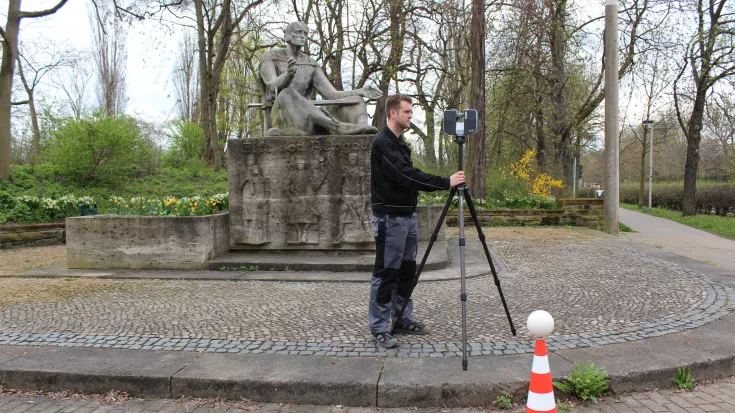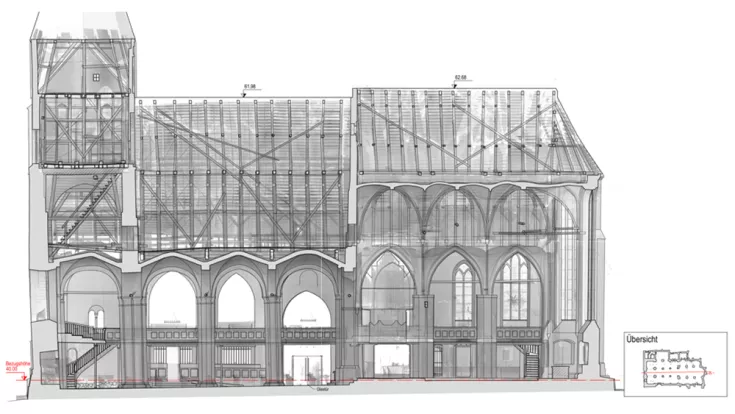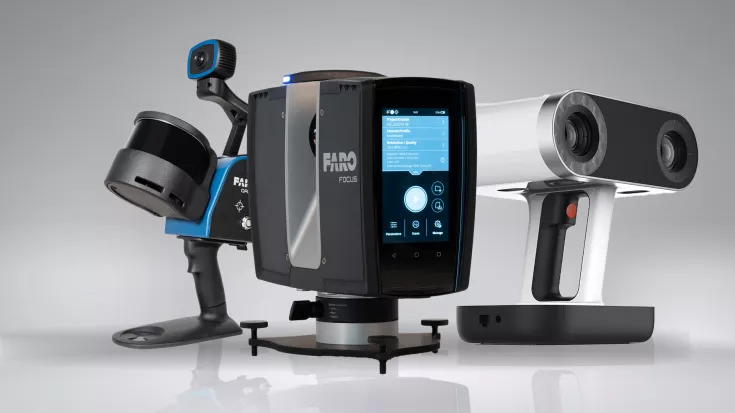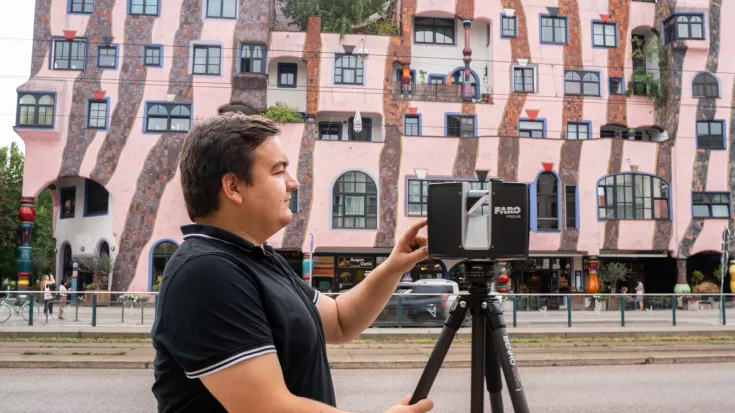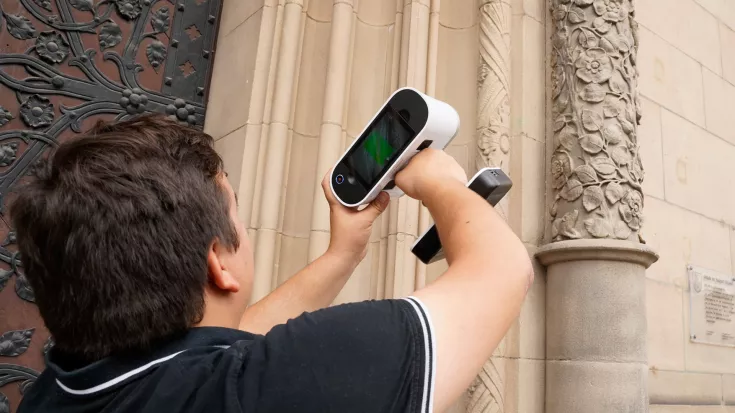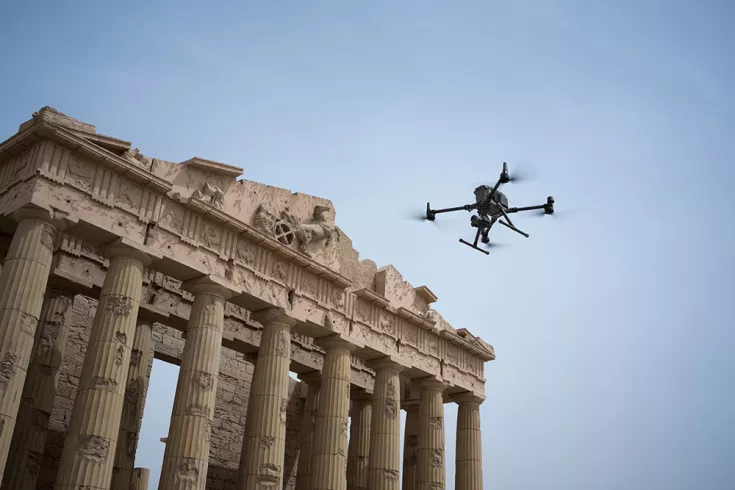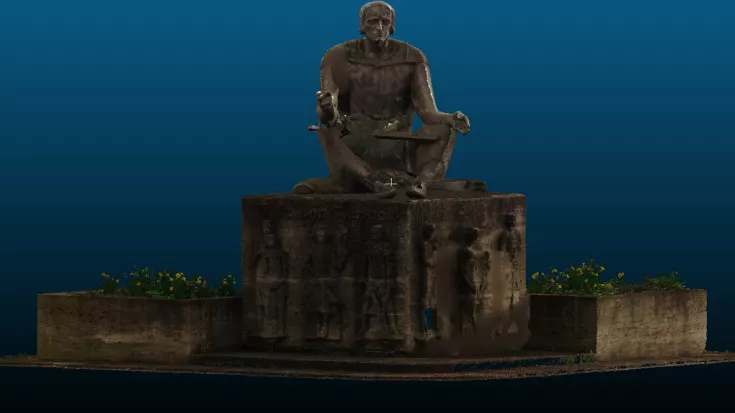3D Laser Scanning & Modeling in Heritage
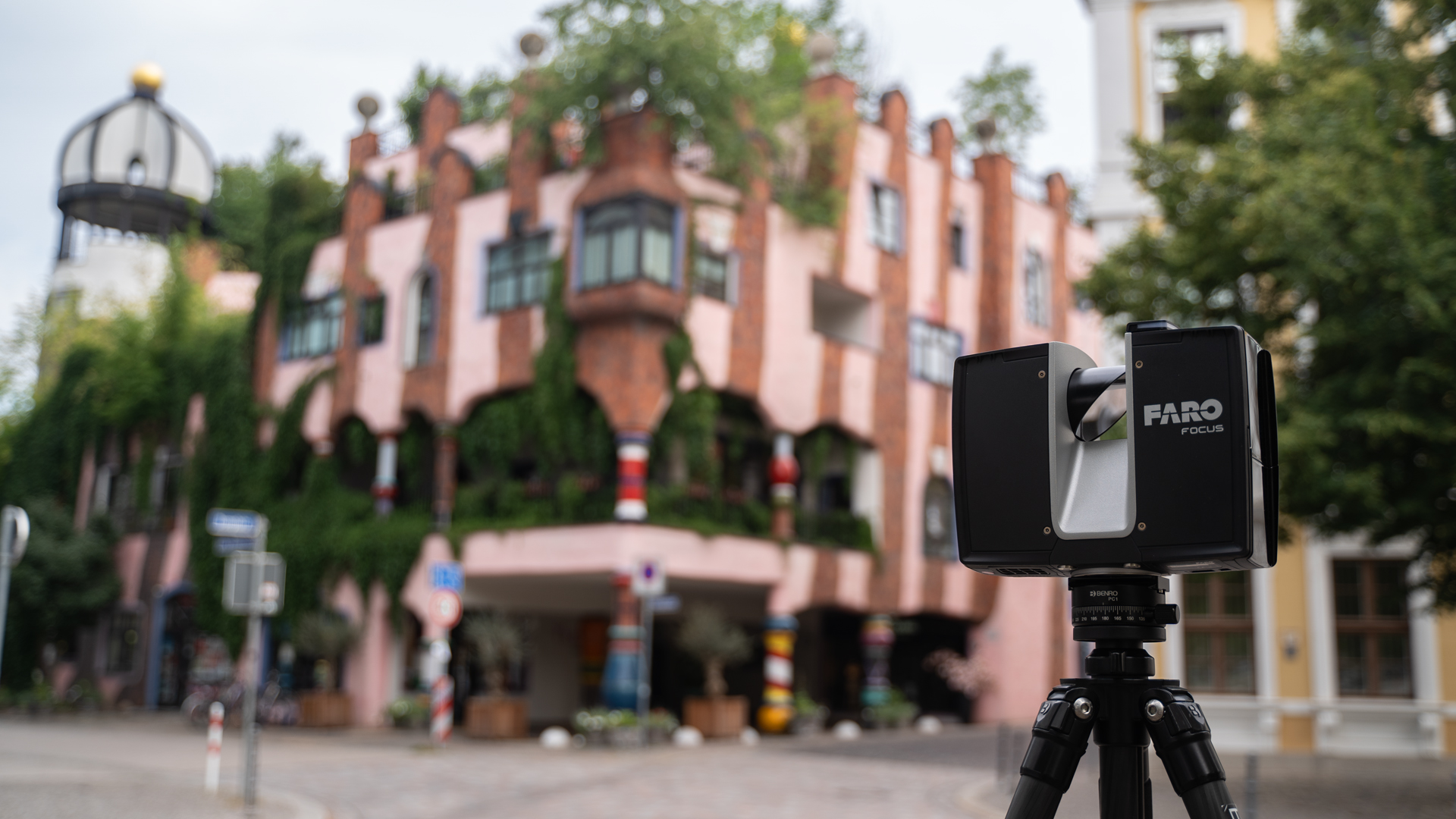
TitleDigital heritage conservation: Protecting the heritage of the past with laser scanning
Historic buildings and monuments are often endangered by natural ageing processes, environmental influences and human impact. In order to preserve these valuable cultural assets, it is essential to document them precisely, monitor changes and plan restorations in detail.
In this area, 3D laser scanners have become indispensable tools for digitizing historical buildings and cultural assets precisely and in great detail. This cutting-edge technology ensures sustainable documentation and protection of cultural sites.
TitleChallenges in the capture & documentation of historical buildings
Surveying and documenting historical buildings presents a particular challenge. Many monuments have grown over centuries, have complex geometries or show signs of damage due to age, weathering or previous restoration work. In addition, sensitive structures must not be physically touched so as not to endanger them further. Another difficulty is the incomplete or outdated documentation of many listed buildings. Precise plans or as-built data are often missing, making precise digital recording essential. The solution lies in modern technologies such as 3D laser scanning, which enables non-contact, detailed capture and forms the basis for sustainable monument preservation.
TitleThe benefits of 3D laser scanners in heritage conservation
Laser scanners offer the immense advantage of documenting objects and buildings in three-dimensional form without affecting the physical structure. The technology fulfills various essential purposes in the field of heritage conservation:
- Precise documentation: Every structure is captured as a detailed point cloud that can be further processed as an exact 3D model. This is crucial for capturing the current condition of monuments and identifying future changes.
- Conservation & restoration: Scans help restorers to identify even the smallest damage and deviations. This supports targeted restoration measures and improves planning.
- Long-term monitoring: Regular scans enable precise long-term monitoring and condition analysis so that historic buildings or objects can be protected from creeping damage.
TitleCapturing heritage digitally: From capturing to creating a 3D model
The process of 3D laser scanning begins with capturing the real environment. High-precision terrestrial laser scanners or mobile handheld scanners capture millions of measuring points per second and generate a dense point cloud – an exact digital image of the building in 3D.
This data is then cleaned up, aligned and transferred to CAD or BIM systems. There, a 2D drawing in the form of floor plans and sectional views or a complete 3D model is created from the point cloud, which serves as the basis for analyses, restorations or virtual inspections. This process ensures that every detail of a historic building is preserved digitally and remains intact for future generations.
TitleTechnologies in monument surveying
Various laser scanner systems and supplementary technologies are used in the field of monument conservation to digitally record and document monuments in great detail. These vary depending on the specific requirements, such as the size of the object, the required resolution or the accessibility of the monument.
The most common systems include terrestrial laser scanners, mobile laser scanners, handheld scanners, photogrammetric systems and drones in combination with a scanner.
TitleTerrestrial laser scanner
Terrestrial laser scanners are stationary devices that operate from a fixed location and are particularly suitable for large facades, interiors and complex architectural structures. They are capable of capturing detailed 3D scans over distances of several hundred meters, making them ideal for use on large structures such as castles, cathedrals and historic building facades. The 3D laser scanner is also used for the high-precision measurement of sculptures or archaeological sites.
The scans offer a high point density and therefore an extremely detailed recording of the structures. The FARO Focus, for example, makes it possible to create detailed images with high precision and accuracy. With this method, buildings can be captured in their entirety and used as the basis for detailed digital models.
TitleMobile laser scanner
Mobile laser scanners are particularly suitable for capturing buildings or ensembles in urban areas as well as for documenting entire heritage sites. The mobile measuring devices are the ideal choice when a comprehensive survey is required within a short period of time.
This technology offers high efficiency and is ideal for large-scale mapping, even if the resolution is somewhat lower than that of terrestrial scanners. Models such as the FARO Orbis or XGRIDS Lixel L2 Po combine flexibility and mobility, making them ideal for larger areas or areas that are difficult to access.
TitleHandheld 3D scanner
Handheld 3D scanners are portable devices that are particularly suitable for hard-to-reach or detailed areas of a monument due to their flexibility of use. They are often used for smaller objects or details such as sculptures, reliefs or ornamental decorations.
Handheld scanners offer a limited range, but extremely high resolution. They are ideal for use in confined spaces and enable the finest details of historical artifacts to be captured precisely.
The Artec Leo, for example, creates detailed models of small surface details and is ideal for intricate work such as capturing ornaments or statues.
TitleSurveying with UAV
The use of drones (UAVs) in heritage conservation has significantly expanded the possibilities for documentation. With the help of UAVs, even areas of a building that are difficult to access or very high can be scanned without the need for scaffolding or lifting platforms. UAVs are often equipped with laser scanners or cameras for photogrammetric images.
They enable efficient and risk-free documentation of even large or inaccessible areas. Due to their flexibility, UAVs offer the possibility to quickly and comprehensively create aerial images which, in combination with terrestrial laser scans, result in complete digital documentation.
TitlePhotogrammetric systems
Photogrammetry supplements laser scanning with image-based data capture. Photos are taken from different angles and combined to create a three-dimensional model. This technique is particularly useful for depicting color and surface details that cannot be captured by laser scanning alone.
This method is particularly suitable for facades, reliefs or small works of art.
Photogrammetric systems are often used in combination with other scanning techniques and offer a cost-effective way of documenting details such as wall paintings, textures and surface structures.
TitleWhy are laser scanners indispensable in heritage conservation?
The use of laser scanners is revolutionizing monument conservation. Thanks to the detailed capture, cultural-historical data can be stored for future generations and reconstructed if necessary. This technology enables monument conservators to collect data without direct intervention, which is particularly beneficial for fragile objects. Digital archiving and documentation also create a valuable basis for research, the public and education.
The precise data and 3D models from laser scanners have become an essential tool for monument conservation in order to preserve cultural assets in the long term and to have access to reliable data for necessary restoration work. In a digitizing environment, this technology not only supports monument protection in safeguarding and maintaining, but also in the exchange and transfer of knowledge about the preserved cultural assets.
